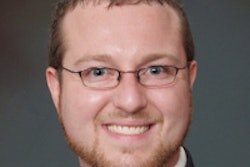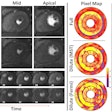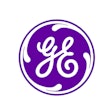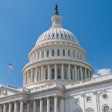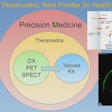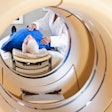CHICAGO - The rapid rise in the early 2000s of utilization of advanced imaging modalities such as CT, MRI, and nuclear medicine has come to an end, according to researchers at Thomas Jefferson University in Philadelphia.
In this RSNA 2011 poster session, Dr. Richard Sharpe presented findings from a study he and colleagues conducted to determine whether the previously seen dramatic growth patterns of these advanced imaging modalities have changed in recent years. He found that from 2007 through 2009, there was significant curtailment of growth in CT and MRI, and, in fact, the rate of nuclear medicine utilization actually decreased.
"Previous studies have consistently shown advanced imaging studies to have experienced enormous growth over the past 10 to 20 years," Sharpe told AuntMinnie.com. "But more recently, excess radiation exposure and high healthcare costs have captured the attention of patients, policymakers, providers, and the press -- and the trend is shifting."
Sharpe and colleagues used data from the U.S. Centers for Medicare and Medicaid Services' (CMS) Part B Physician and Supplier Procedure Summary Master Files from 2000 to 2009. The group aggregated all discretionary codes for CT, MRI, and nuclear medicine (including PET) and tabulated professional component claims (technical component claims were excluded to avoid double counting).
With this data, Sharpe's team calculated rates of use per 1,000 Medicare beneficiaries in all places of service for each modality, each year. The team also calculated compound annual growth rates for the periods 2000 to 2006 and 2007 to 2009 for comparison.
Changes in calculated compound annual growth rate (CAGR)
|
Advanced imaging composite growth for all three modalities between 2000 and 2006 was +9.9%; it dropped to +1.4% between 2007 and 2009.
"There has been dramatic curtailment of advanced imaging utilization since 2007, which suggests there has been a culture shift in how referring physicians perceive and utilize advanced imaging services," Sharpe told AuntMinnie.com.
Why the cultural shift? There are many factors, according to Sharpe, not the least of which is reimbursement cuts.
"Concern about radiation exposure may make healthcare providers and patients less quick to rely on CT and nuclear medicine examinations," he said. "Referring physicians may better understand the indications for advanced imaging, given the publication of American College of Radiology Appropriateness Criteria. And the rise in radiology benefits management organizations may be effectively educating clinicians about appropriate imaging utilization and providing a check to slow use of inappropriate studies."
Imaging has become a target for healthcare reform, but it's only part of a larger picture, Sharpe told AuntMinnie.com.
"Advanced imaging is just one part of a complex and expensive healthcare system, and these imaging services are simply no longer growing at a rapid pace," he said. "Our research documents that these studies are growing at modest rates -- or even decreasing -- and policy actions aimed to further reduce use of these imaging services may decrease the availability of advanced imaging for patients who really need it. It's time to look elsewhere for a way to solve our healthcare crisis."








